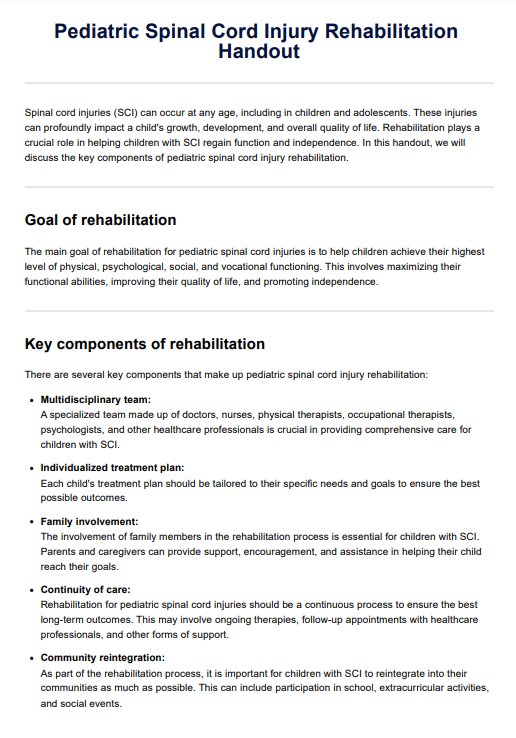A pediatric spinal cord injury is treated through a combination of immediate immobilization, supportive care, and long-term rehabilitation. This may include physical therapy, occupational therapy, and sometimes surgical interventions to stabilize the spine and improve function.

Pediatric Spinal Cord Injury Rehabilitation Handout
Download Carepatron's free PDF handout on pediatric spinal cord injury rehabilitation featuring valuable information for your patients.
Pediatric Spinal Cord Injury Rehabilitation Handout Template
Commonly asked questions
Rehabilitation in spinal cord injury typically includes three phases: acute, subacute, and chronic. The acute phase focuses on stabilization, the subacute phase on initial recovery and functional training, and the chronic phase on long-term rehabilitation and reintegration into daily life.
Rehabilitation after a spinal cord injury can vary widely but generally lasts several months to a year or more. The duration depends on the severity of the injury, the individual’s progress, and the specific rehabilitation goals.
EHR and practice management software
Get started for free
*No credit card required
Free
$0/usd
Unlimited clients
Telehealth
1GB of storage
Client portal text
Automated billing and online payments











